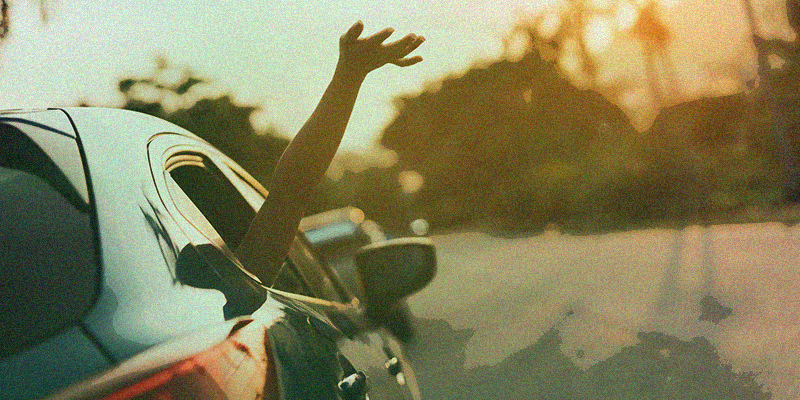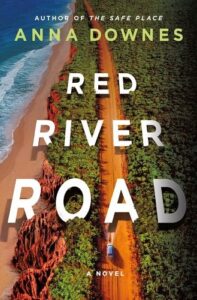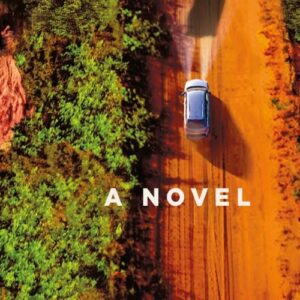I spend a lot of time thinking about travel. For me, maps and guidebooks are as addictive and indulgent as trashy magazines were in the days before smartphones, and an ever-shifting bucket list lives rent free in my head.
I’m also obsessed with scary stories. Horror films, thriller novels, urban legends, whatever: nothing compares with a really good dose of fictional fear. I love the rush of watching an ill-advised character descend a staircase into a darkened basement, the goosebumps that erupt when they realise they’re not alone. Throw in a few decent jump scares and I’m a happy woman.
What, then, could possibly be better than a combination of the two? That was my theory when in 2021 I began brainstorming ideas for my third novel.
During the on-and-off lockdowns of pandemic life I was especially obsessed with road trips. I discovered countless travel-fluencers on Instagram whose artfully overexposed images I ate up like dessert. Fantasizing daily about coastlines and red dirt, I found myself pitching the same idea to my husband over and over again: Let’s buy a campervan, pull the kids out of school for a year and head off around Australia. And we weren’t the only ones; everyone we spoke to seemed to have #vanlife on the brain.
For many reasons, though, it wasn’t to be. And so, as restrictions rolled out and in and back out again, my envy grew. I wanted to be those bronzed, lithe people on my socials feeds; I too wanted to embody that aesthetic. Most of all, I wanted freedom and adventure (and a VW Kombi, obviously) – and if I couldn’t have those things, I would just have to go ahead and write about them. So I set about planning a travel thriller fraught with danger and tension. Where where the scares, the goosebumps? What could go wrong on a long-distance road trip?
Well, according to some of my favourite movies, quite a lot. You might, for example, stumble across an old homestead inhabited by a chainsaw-wielding cannibal. Your Airbnb might feature an intensely creepy basement, or a deranged elderly host who likes to crawl into your bed while you sleep. You could accidentally hit a child while driving through Nebraskan cornfields, picked up Rutger Hauer on your way to San Diego, or accept mechanical help from a psychopath while backpacking in Australia. Inspired, I rubbed my hands together with glee. Oh the fun I would have with this novel!
But as my research took me into more sobering territory, I felt my interests shifting. I became increasingly fascinated with the lived experience of travellers, particularly women on their own, and the reality of life on the road. Turns out that there aren’t as many marauding serial killers as you might think; indeed, I found no cannibals and not one example of an effigy-burning child cult. The scariest travel stories I dug up in real life were in fact largely centred around desperation, impossible choices and survival at any cost. They often highlighted the bleak dangers of isolation, poverty, unmet needs, prejudice, systemic failures and mental health crises. They also featured a huge number of dead women, the majority of whom were killed neither by a random opportunist nor a demonic entity but someone they knew, even loved.
Which led me to question the responsibilities of storytelling. Because sure, we all need escapism, we all love a dopamine hit, but what if our expanding appetite for kicks leads to social disengagement? At a time when rogue murderers dominate our most popular crime and horror narratives, what do we do with the fact that the vast majority of all homicide victims knew their perpetrators? That almost three quarters of those perpetrators are family members or intimate partners? While we’re all chasing our serial killer fix, what more ordinary horrors are we ignoring – and perhaps even perpetuating?
Deciding I wanted to write something fun and scary and responsible, I wondered how best to craft it. Was it even possible? Could I think of any examples of where it had already been successfully done? Well, what a silly question. Of course I could.
One of the reasons I like scary stories so much is because suspense requires maximum engagement. Primal fears are tapped, childhood memories are triggered, and our imaginations are called upon to fill in the blanks. And stories about travel are especially powerful because they deal with the liminal, the transient, the unpredictable; the grey areas between Here and There where the lines are blurred and anything could happen. So I pulled together a list of books that I believe hit all those marks, and prove that a single story can be many things at once. Ranging from eerily unsettling to downright terrifying, these literary road trips will take you places even when you’re physically tethered. They’ll ignite your wanderlust and get your pulse racing. But best of all, they serve as a reminder that, beyond the twists and turns, the truth is often stranger – and much scarier – than fiction. Enjoy!

The Hunger by Alma Katsu
I adore Katsu’s special brand of historical-slash-supernatural horror and this book, quite rightly, is often lauded for being one of the best (and most disturbing) road trips ever written. Instead of cars or trucks, though, you’ll find horses, carts and a wagon train of pioneers. Set in 1846, it reimagines the true story of the Donner Party as they travel west across the American Prairie to California – but as the landscape grows wilder and more hostile, travel conditions become increasingly unbearable. And when disease strikes and members of the group start to disappear, it seems that rapidly dropping temperatures and dwindling food supplies are the least of their worries. Supremely tense and suffused with dread, this excellent survival story speaks to colonialism, greed, and the terror of a seemingly cursed journey.
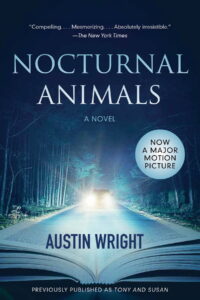 Nocturnal Animals by Austin Wright
Nocturnal Animals by Austin Wright
I read this book years ago but have never forgotten the choking claustrophobia of Tony Hastings’ journey through the dark: I can still see the headlights of that battered Buick winking on the road behind him and hear the slow crunch of tyres as both vehicles slow to a halt. Originally titled Tony and Susan, this story-within-a-story about a woman reading her ex-husband’s crime novel is as absorbing as it is chilling – especially because the fictional manuscript, which opens with a man brutally separated from his family after what at first appears to be a road rage incident, feels so viscerally real. I remember at the time feeling let down by the ending but on reflection the slow descent to the conclusion after such an explosive, high stakes start is kind of the point.
UNDER THE SKIN by Michel Faber
This is another book that has stayed with me for years, one I often find myself thinking about, in which a woman called Isserley drives up and down the A9 in rural Scotland picking up men who need a ride. She likes them muscular and unencumbered by family or partners. She chooses them very carefully. She also suffers from chronic pain. Why? Well, you’ll have to read it (if you haven’t already). Faber is one of my all-time favourite writers and this sci-fi dystopia is both wildly imaginative and wholly resonant. A queasy yet gripping ride into a murky mirror world that will make you want to throw out all the meat in your house, I think it’s possibly the best hitchhiker story ever told. Prepare for it to do exactly what it promises: get right under your skin.
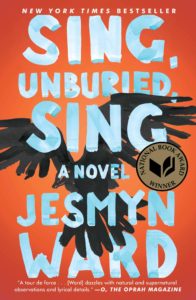
Sing, Unburied, Sing by Jesmyn Ward
While not strictly scary – and certainly not ‘fun’ – this profoundly affecting novel about generational trauma set on the Gulf Coast of Mississippi has a lot to teach us about sensory intensity. From the grisly opening in which 13 year old protagonist Jojo helps his grandfather slaughter a goat to the horrific history of the Parchman penitentiary, everything about this story is distressingly tangible – but it’s the family car ride to collect Jojo’s newly released father from prison that really packs a punch. Taking up almost half the book, the journey is a ghost-filled, danger-laden vomit-fest through contaminated landscapes during which every passenger is haunted and the air reeks of sweat and dread. A fierce critique of life in Black America, it also serves as a stark reminder of the displacement felt by so many in the wake of Hurricane Katrina.
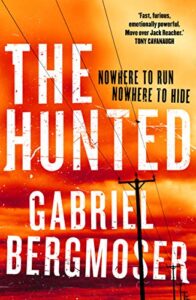
The Hunted by Gabriel Bergmoser
I don’t often read books in one sitting but I finished this pretty much without a break. Set in the sunburnt plains of the Australian outback, it starts when the owner of a remote gas station is forced out of his quiet existence and into a terrifying nightmare after an injured young woman appears as if from nowhere. What follows is so fast, addictive and relentlessly intense I quite literally couldn’t put it down. If you’re looking for a break-neck read with compelling characters, multiple car chases and a high level of gore, you cannot go wrong with this heart-pounding tale of an isolated community left to make its own rules – and the girl who refuses to be their prey.

Razorblade Tears by SA Cosby
When it comes to blending high octane propulsion and smart social commentary, this book absolutely takes the cake. A story as much about parenthood and homophobia as gang warfare and guns, Cosby’s crime odyssey about two misanthropic ex-cons who team up to avenge the death of their married sons is so alive and visceral, so funny and moving I could talk about it all day long. With flawless characters development and a breakneck pace, it turns the classic buddy adventure on its head by using the road trip as a vehicle for self-examination and personal change. The audiobook, narrated by Adam Lazarre-White, is an especially powerful way to experience this singular relationship between two unlikely companions.
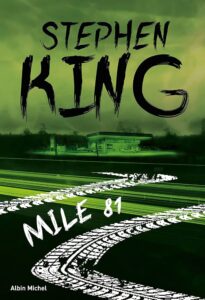
MILE 81 by Stephen King
The opening tale in King’s 2015 collection The Bazaar of Bad Dreams is an absolute banger featuring many of his signature tropes: a group of bored bike-riding kids, an abandoned building, an empty stretch of highway and – is there anything more Kingian? – a flesh-eating station wagon. Originally written when the Master of Horror was just 19 years old and inspired by long drives across Maine on the often deserted I-95, it tells the story of a kid called Pete who encounters the car while exploring an abandoned rest stop and bears terrible witness to its demonic appetite; a closer look, however, reveals a harsh depiction of loners, degeneration and decay. Strange and alluring, this is among my favourite of King’s shorts.
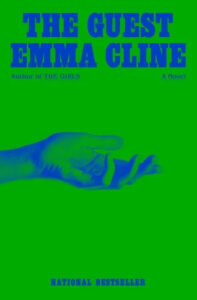
The Guest by Emma Cline
Okay, fine, this isn’t technically a road trip novel. But it is very much about constant motion, impermanence and the state of limbo in which itinerants invariably find themselves – especially those for whom a fixed home is not an option. When escort and drifter Alex finds herself essentially homeless after being ejected from the plush Long Island home of her wealthy older client, she adapts to survive among the elite by pretending to be one of them… but how long can she keep up the façade? The answer is hard won, and the denouement difficult to watch in a car-crash kind of way… yet this book is also one of the most seductive and exquisitely told I’ve ever read. It has the emotional atmosphere of a tightrope walk across a bottomless gorge: I held my breath from beginning to end.
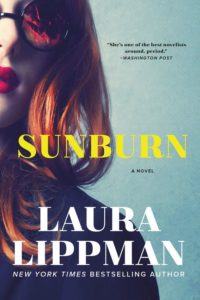
Sunburn by Laura Lippman
Given that this novel centres on two people whose long-distance paths cross at Delaware diner just off the highway and end up staying much longer than expected, it could arguably be described as the Road Trip That Wasn’t. But the way in which Lippman captures the bubble of travel – nothing and no one exists outside of the here and now – as well as the sense that without your usual context you can be anyone you want, makes it a must-read for this list. It also explores the rapidity with which relationships (and mutual reliance) are typically formed in transit and the dangers faced by role-shedding women who know exactly what they want and need. Intoxicating and very sexy, Sunburn is a clever spin on classic noir fiction in which the reimagined femme fatale has nothing to lose and everything to hide.
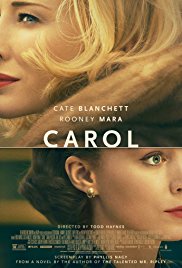
The Price of Salt by Patricia Highsmith
Not your typical thriller but thrilling nonetheless, Highsmith’s side-step into queer romance is the only of her novels in which no violent crime is committed. Instead, it focuses on doomed love, heartbreak and obsession; also blackmail, bugged hotel rooms, and the terror of being chased. The story follows two women who, after a brief but electric first encounter, abandon their male partners to drive across the country in search of their freedom only to find that they’re being pursued. The literal journey is brilliantly used to communicate the exhilaration of putting needs into action and the devastation that comes with letting go of what you so desperately want; also, the excruciating intimacy of being in a confined space with someone who has the power to hurt you is so beautifully rendered – a reminder that the real danger is not always outside the car.
***

